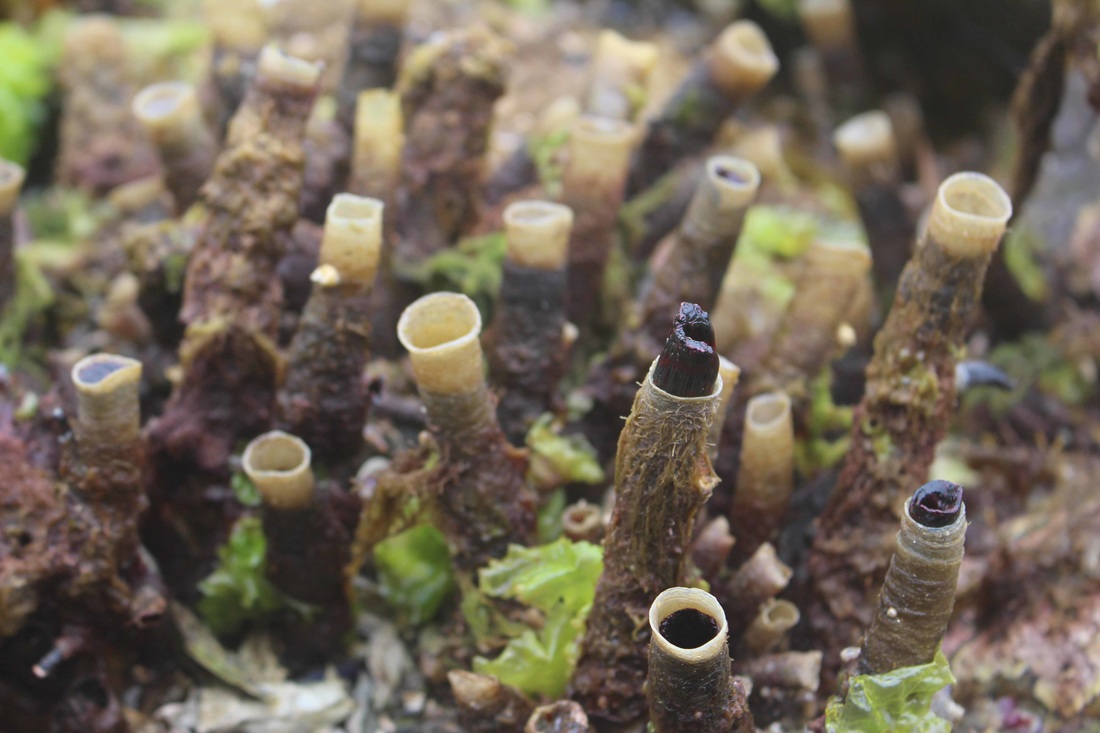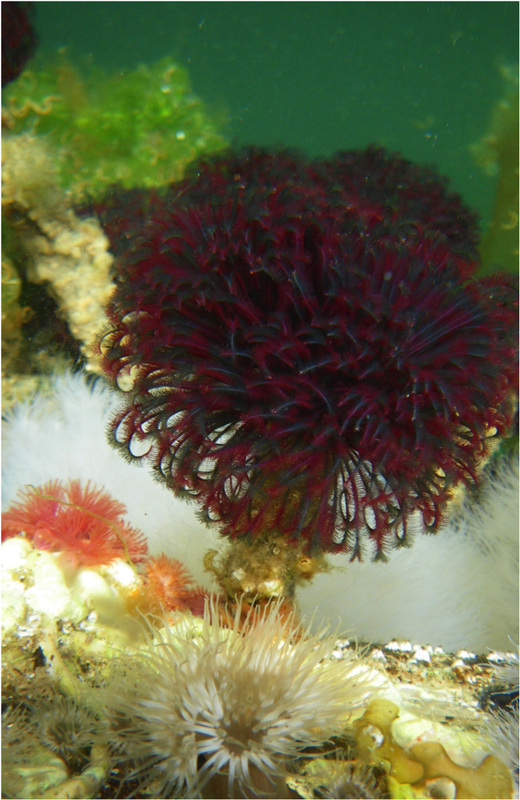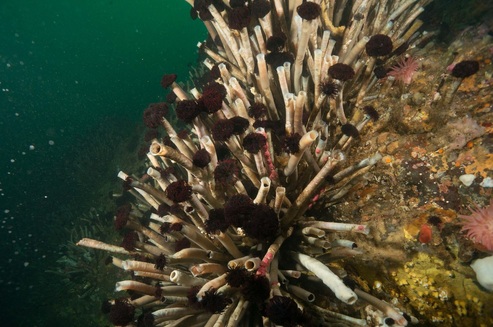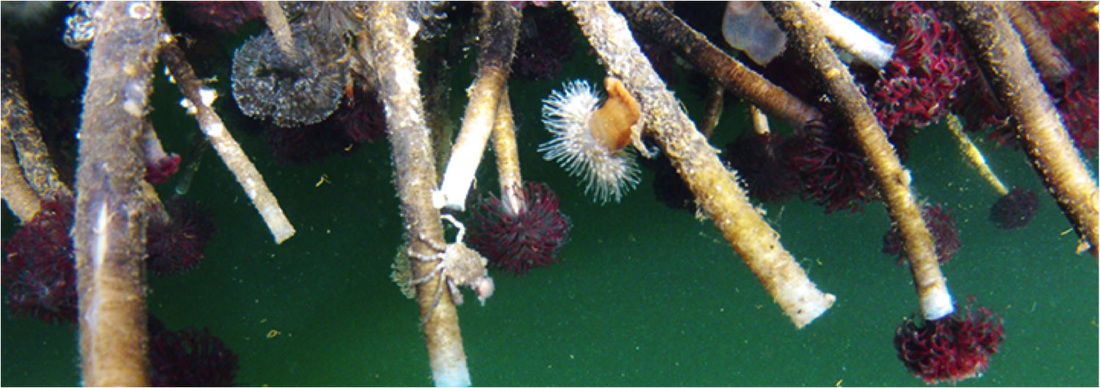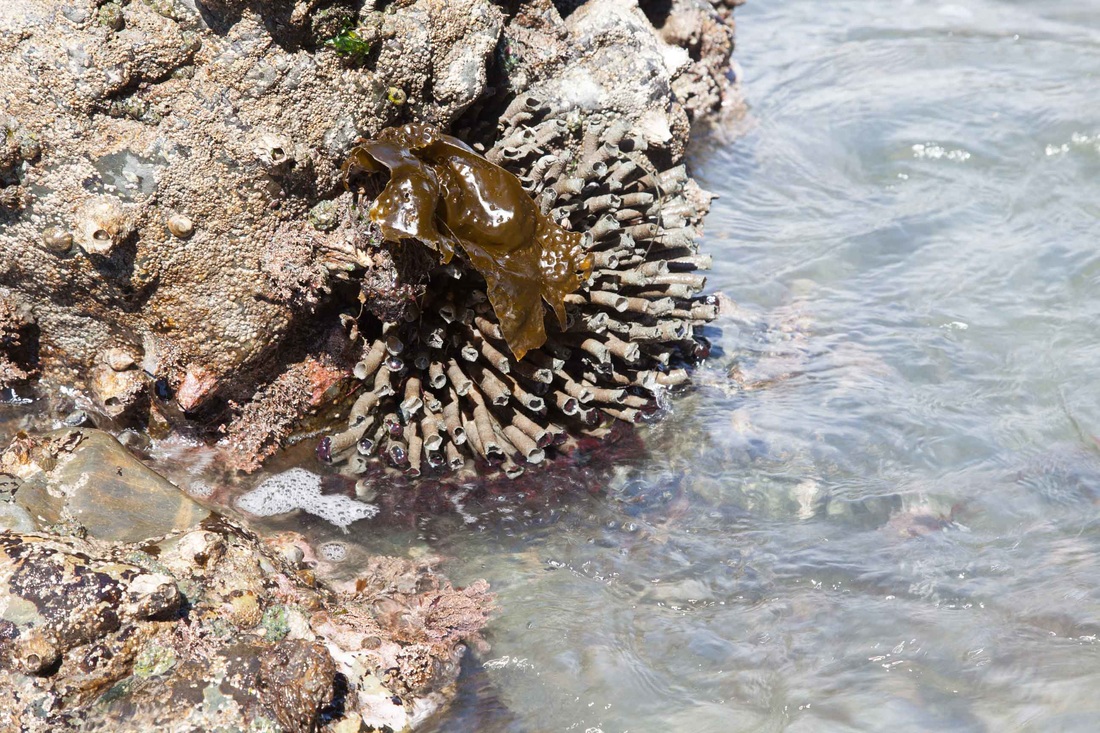Northern feather duster worm, Vancouver feather-duster, plume worm • Eudistylia vancouveri
Northern feather duster worms growing on docks. Photos by (clockwise from bottom left): Julie Mundy, Sara Wickham, Wiebe Nijland, and Rosie Child. Below: northern feather duster worms growing on intertidal rocks. Photo by Wiebe Nijland.
Identification
This marine worm can be identified by its banded green and maroon or purple plumes (radioles), which get to 5 cm in diameter. The radioles are only occasionally branched. It has a long light grey tube with a parchment-like texture, into which it can retract its plume when disturbed. The tube gets to approximately 1 cm in diameter and 60 cm tall.
Habitat & Range
The northern feather duster worm aggregates in large clusters on docks, pilings, and rocks, from the intertidal to a depth of 30 m. Its range extends from Alaska to central California.
This marine worm can be identified by its banded green and maroon or purple plumes (radioles), which get to 5 cm in diameter. The radioles are only occasionally branched. It has a long light grey tube with a parchment-like texture, into which it can retract its plume when disturbed. The tube gets to approximately 1 cm in diameter and 60 cm tall.
Habitat & Range
The northern feather duster worm aggregates in large clusters on docks, pilings, and rocks, from the intertidal to a depth of 30 m. Its range extends from Alaska to central California.
|
Similar Species Two other Eudistylia species exist on the BC coast. Neither has the distinct green and red or purple banding of the northern feather duster worm. The polymorph feather-duster (E. polymorpha) is variable in colour, and may be maroon with lighter coloured bands. The split-branch feather-duster (Schizobranchia insignis) is uniform but variable in colour, and has dichotomously-branched plumes iNaturalist https://www.inaturalist.org/taxa/84864-Eudistylia-vancouveri |
References
Cowles, D. (2005). Eudistylia vancouveri (Kinberg, 1867). Invertebrates of the Salish Sea. Rosario Beach Marine Laboratory.
Harbo, R. M. (1999). Whelks to whales: Coastal marine life of the Pacific Northwest. Madeira Park, BC: Harbour Publishing. P. 74.
Lamb, A., and Hanby, B. (2005). Marine Life of the Pacific Northwest [electronic version]. Madeira Park, BC: Harbour Publishing.
Authors and editors of page
Kelly Fretwell and Brian Starzomski (2014).
Cowles, D. (2005). Eudistylia vancouveri (Kinberg, 1867). Invertebrates of the Salish Sea. Rosario Beach Marine Laboratory.
Harbo, R. M. (1999). Whelks to whales: Coastal marine life of the Pacific Northwest. Madeira Park, BC: Harbour Publishing. P. 74.
Lamb, A., and Hanby, B. (2005). Marine Life of the Pacific Northwest [electronic version]. Madeira Park, BC: Harbour Publishing.
Authors and editors of page
Kelly Fretwell and Brian Starzomski (2014).
